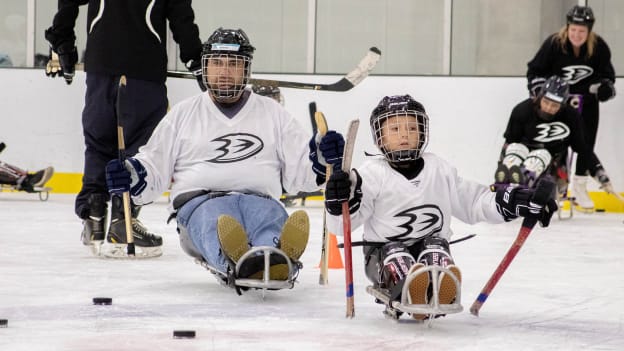More Information
Blind Hockey is an excellent spectator sport as it is easily recognizable to the average hockey fan, with minimal rule adaptations to help with gameplay and player safety.
- Custom 3-foot high nets are used rather than the traditional 4-foot nets to keep the puck low and near the ice so it can make noise and be tracked aurally.
- Teams must complete one pass in the attacking zone prior to being able to score. This provides both the low vision defense and the goalie an extra opportunity to track the puck.
- An on ice official uses a different whistle to indicate that a pass has been completed and the attacking team is eligible to score.
- Tag-up off-sides is used with the assistance of verbal communication from on ice officials. The game is played with standard IIHF safety protocols including no-touch icing, and crease violations to ensure utmost player safety.
- All players must wear full protective gear including face mask.
The Anaheim Ducks and The Rinks are dedicated to growing the sport of blind hockey and supporting the NHL's Hockey is for Everyone initiative. If you have any questions about the Anaheim Ducks Disabled Hockey Programs, please contact [email protected].

